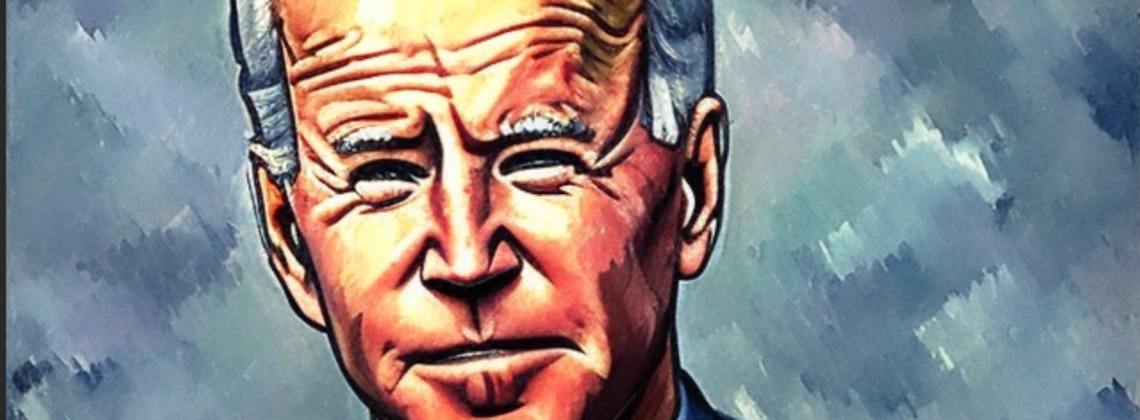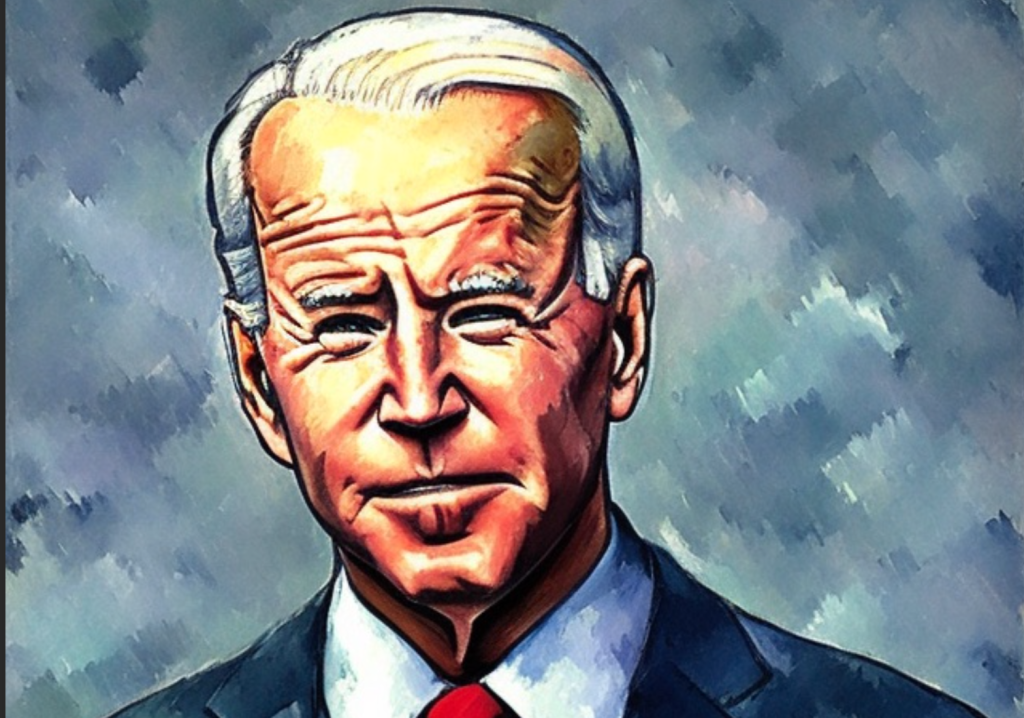

Trump will likely win. But does anyone but Biden stand a chance of beating him?
Last month’s debate confirmed what public opinion polls have indicated for the last six months: If Joe Biden is the Democratic Party’s presidential nominee, he will lose to Donald Trump.
But Democratic strategists who are calling for Biden to step aside don’t understand the full reason Biden is losing. It’s not just that Biden is old. It’s that the Democratic Party’s policies and public image do not appeal to working-class Americans. And without a higher percentage of the working-class vote Democrats can’t win.
The Democratic Party has less appeal to the working class than it ever has before. The white southern working class left the party at least a generation ago and is not returning. In the last decade the Democratic Party has also lost working-class whites in the Rust Belt. In 2020 Biden lost the vote of whites without a college degree by thirty-two percentage points and the overall working-class vote (with all races included) by eight percentage points.
This year is likely to be a lot worse because he won’t be able to rely on Black and Hispanic support to offset his poor showings among the white working class. Polls indicate that Donald Trump is poised to win a greater share of the Hispanic and Black (especially Black male) vote than any Republican presidential candidate has in more than half a century.
As a result of this shift, polls for months have indicated that Biden will probably lose three Sunbelt states that he won in 2020: Arizona, Nevada, and Georgia. To regain those states he will need an extraordinarily successful appeal to Blacks and Hispanics.
Three other states that Biden won in 2020 are now toss-ups: Pennsylvania, Michigan, and Wisconsin. To win the White House, Biden (or any other Democratic presidential candidate) has to win at least two of these three states. He is currently polling behind in all of them, partly because of his declining appeal to working-class whites.
Still: Can any other Democrat win the working-class vote?
The prospects are grim. Last year the Brooking Institution and the Progressive Policy Institute conducted a detailed study of non-college-educated voters and found that their interests did not line up with the Democratic Party’s priorities. More than two-thirds of these voters said that their highest political priority was either inflation or the “high cost of living”—which fifty-five percent blamed on the government’s stimulus spending.
The second highest priority for these voters was immigration reform. They would like to see an end to illegal immigration, although they also seemed more open than the Republican Party to expanded legal immigration.
The study found no reason to suggest that the current Democratic political strategy of focusing on abortion rights, saying as little as possible about immigration, and offering few concrete plans on inflation reduction will have any hope of winning back the working class.
Instead, to win back the working class, Democrats will have to offer a persuasive plan to keep inflation low while also tightening border security, offering an expanded path to legal immigration, and avoiding alienating social conservatives on issues like abortion and LGBTQ+ rights that don’t resonate very much with working-class voters anyway.
Neither Vice President Kamala Harris nor California Governor Gavin Newsom—the two candidates most often mentioned as a possible replacement for Biden—are likely to do this. Most working-class Americans are not likely to view California’s economy, with its average gas price of $4.80 a gallon and its median home value of $787,000, as a model for the rest of the country.
The Brookings Institution and PPI study found that working-class voters are not particularly concerned about climate change. Nor are their votes dependent on other issues that college-educated Democrats talk about, such as abortion and diversity, equity, and inclusion.
But it’s not just that the Democrats are failing to speak to working-class voters’ concerns. They’re also alienating socially conservative voters (including many socially conservative working-class voters) by promoting candidates whose political careers have been focused on pushing the causes social conservatives most strongly oppose.
Newsom, for example, has long been one of the strongest advocates of LGBTQ+ rights and same-sex marriage in the Democratic Party. In 2004, as mayor of San Francisco, he directed the city-county clerk to issue marriage licenses to same-sex couples in defiance of California state policy. Newsom’s actions led to a California state supreme court decision legalizing same-sex marriage in California.
Since that time Newsom has continued to be a strong advocate for both LGBTQ+ rights and abortion rights. “California is proud to have some of the most robust laws in the nation when it comes to protecting and supporting our LGBTQ+ community,” Newsom announced last September. And on abortion he has made California the state with the “nation’s easiest abortion access,” as the news agency Cal Matters boasted. Under legislation that Newsom signed into law last year, all abortions in California must be free for patients, and private insurance companies are not allowed to charge co-pays, deductibles, or other fees for abortions.
The Democratic Party seems unable to grasp that social issues are class issues. Not only are working-class voters more likely than college-educated voters to be social conservatives—they’re also more willing to turn those issues into a political litmus test. In 2020, eighty-four percent of white evangelical voters who lacked a four-year college degree voted for Trump—which meant they were far more fervent Trump supporters than college-educated white evangelicals, only sixty-three percent of whom supported the GOP ticket that year. If the Democrats nominate someone who is as hostile to social conservatives’ concerns as Newsom is, it’s difficult to see how any working-class social conservatives will be willing to vote for the Democratic ticket.
Unfortunately, Kamala Harris has proven almost as unable as Newsom to speak to working-class concerns. Polls show that she is marginally more popular among African Americans than Biden, but few suggest that she has a plausible path to win white working-class votes in the Rust Belt. Her strong focus on abortion rights, along with her identification with an unpopular border control strategy and her participation in an administration the working class blames for inflation, have not positioned her for widespread working-class appeal.
If the 2022 elections are any indication, abortion is not as likely to be as helpful an issue for the Democrats as they imagine. In the last gubernatorial election in Georgia, Democratic candidate Stacey Abrams focused her campaign on abortion rights and got trounced by incumbent governor Brian Kemp, carrying a substantially smaller share of the vote than she had in 2018—even though her 2022 election campaign was conducted in the immediate aftermath of Dobbs and at a time when Georgia had a highly restrictive abortion law. It’s hard to imagine that Harris’s fortunes in Georgia would be any different than Abrams’.
Some of the other Democrats who have been mentioned as possible candidates might be at least marginally stronger options. Michigan governor Gretchen Whitmer, for instance, could presumably carry Michigan, which is more than Newsom, Harris, and even Biden are likely to do. But even if someone like Whitmer gets the nomination, the Democratic Party will face a real struggle to win back the trust of working-class voters and avoid moving too far left of center on issues like abortion and LGBTQ+ rights.
In short: The Democrats need not only a new candidate but a new image. They need someone who will be the candidate Biden in 2020 promised us he was: one who understands working-class voters’ concerns. Democrats must avoid becoming defined as the party of a college-educated elite. They must avoid unnecessarily antagonizing socially conservative voters. They must realize the pain that inflation has inflicted on many members of the working class—and they must offer a viable plan to keep it under control.
If they can do all of that, they just might defeat Donald Trump.
But if they can’t, they won’t have a viable path to victory. Without a change of priorities and image, changing the top of the ticket isn’t likely to accomplish much.
Daniel K. Williams is a historian working at Ashland University and the author of The Politics of the Cross: A Christian Alternative to Partisanship.
Image: “CezanneAI”
Wow, this is good.
Another great article, Dan. Sadly, the Dems just don’t seem to get this basic fact. “Scranton Joe” was, for better or for worse, the last link to a party that represented the working class, but he followed his party in abandoning that commitment decades ago. Since 1972, the people that run the Democratic Party today have told themselves that the white working class will just die off. They haven’t. They have just turned MAGA, in no small part due to their abandonment by the Dems.
The DEMs have veered so far Left, that there isn’t any Common Sense , Left. They will stagger off the
Socialist Blind Cliff, into the Ocean of self destruction.